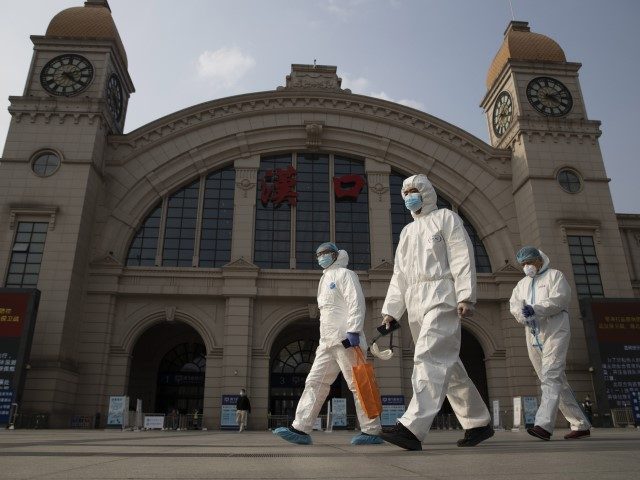Chinese Communist Party officials locked down the entire city of Xi’an on Thursday after reportedly just 143 of the community’s 13 million residents tested positive for the Chinese coronavirus over the past two weeks, China’s official state-run press agency, Xinhua, reported.
Xi’an’s government announced a citywide stay-at-home order on the afternoon of December 22 that went into effect for an indefinite amount of time on December 23. The city will allow “one family member to do grocery runs every two days” during the lockdown period, according to the Wall Street Journal.
Xi’an municipal officials “urged residents not to leave town unless they are tested for Covid-19 [Chinese coronavirus] and have clearance from employers or community-level authorities,” the newspaper reported Wednesday.
“All indoor dining and outdoor gatherings, such as group dancing in public spaces, have been suspended,” the Journal added.
Communist officials ordered Xi’an — a city known for its pre-modern Christian heritage — into lockdown just two days before Christmas. While Xi’an’s modern-day population counts Christians as a minority, the historic metropolis attracted the first recorded Christian missionary to China in the 7th century due to its location along the ancient Silk Road uniting Eastern and Western merchants.
The Xi’an Stele, or Nestorian Monument, is a stone tablet dating to 781 AD unearthed around the early 17th century in Xi’an’s Shaanxi province. The stone tablet attests to the missionary activity of Nestorian Christians in China as early as 635 AD. According to the stele’s inscription, “Chinese emperor Taizong received the Nestorian Persian monk A-lo-pen in his capital city of Chang’an (modern Xi’an) in 625 and looked with favour upon him and the writings of the ‘luminous doctrine’ (Christianity) he brought with him,” Encyclopedia Britannica details.
“By 638 a monastery for this monk and 20 others had been constructed at the expense of the Imperial coffer in the capital city. By 650 it is reported that the Christian mission had expanded sufficiently to be recognized at the diocesan level,” according to the encyclopedia. Xi’an’s Nestorian Christian community “disappeared after the 10th century” due to local Buddhist opposition.
The Xi’an Stele “serves as a concrete proof to China’s earliest celebrations of Christmas, during which it says the emperor of the time held special rituals and shared the delicious food to people who believed in Christianity,” the state-run China Global Television Network (CGTN) noted in May 2019.

COMMENTS
Please let us know if you're having issues with commenting.